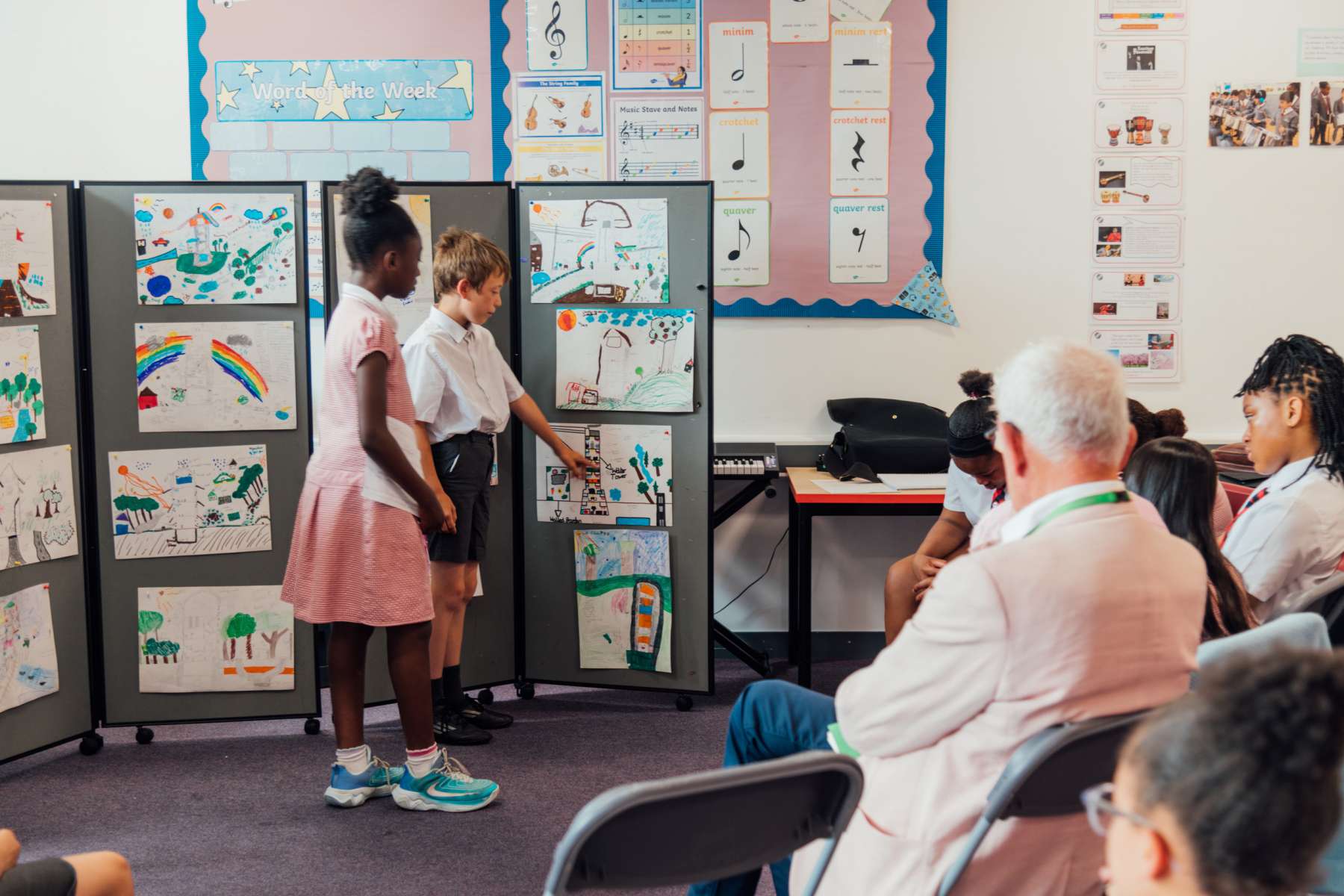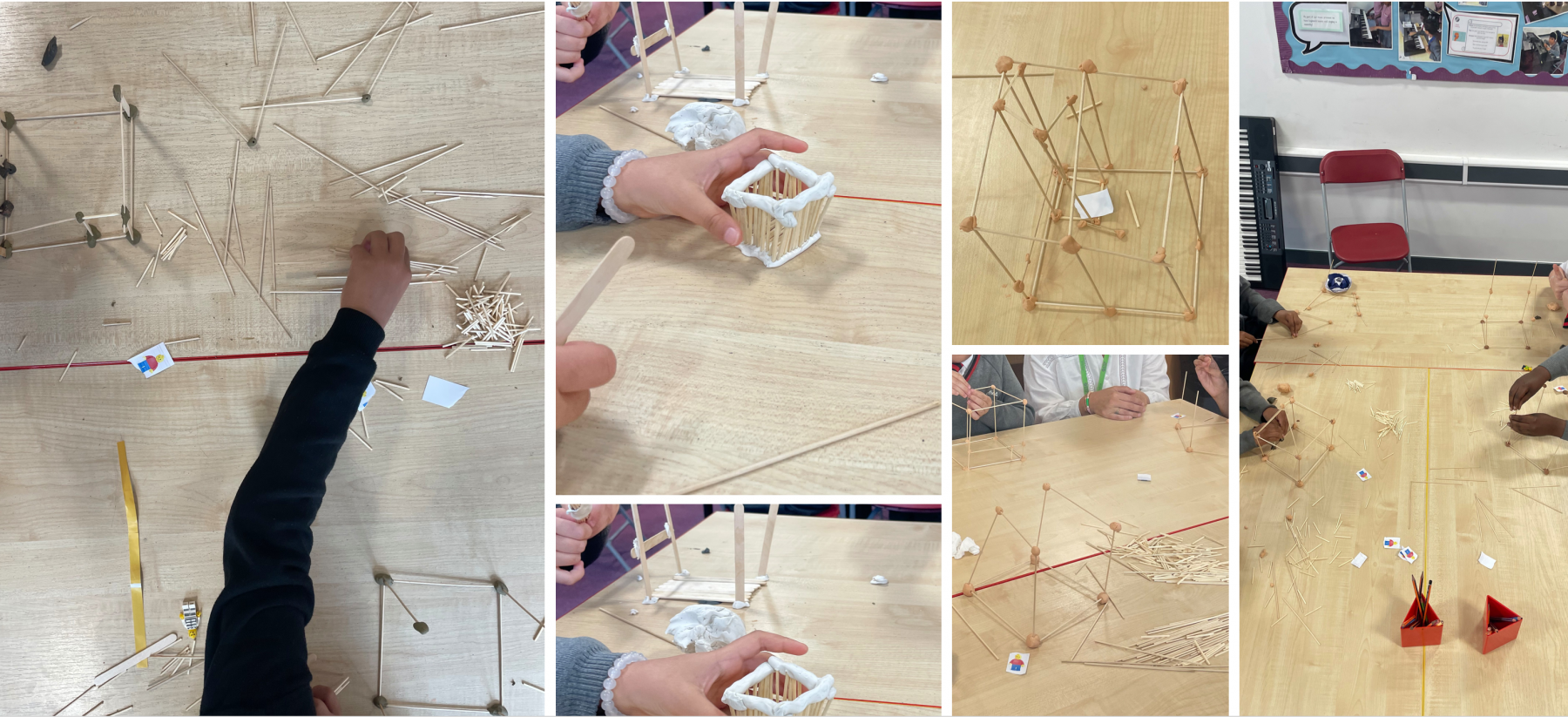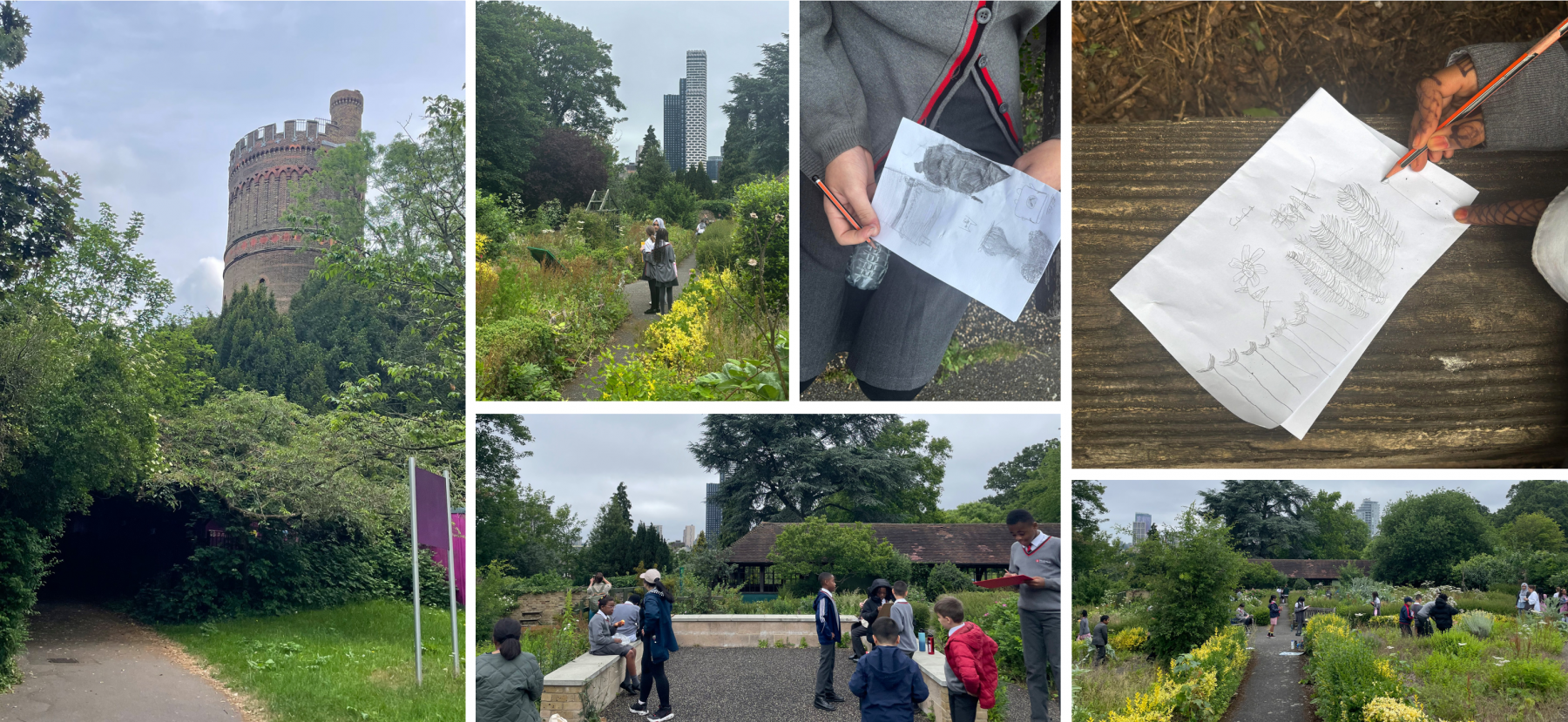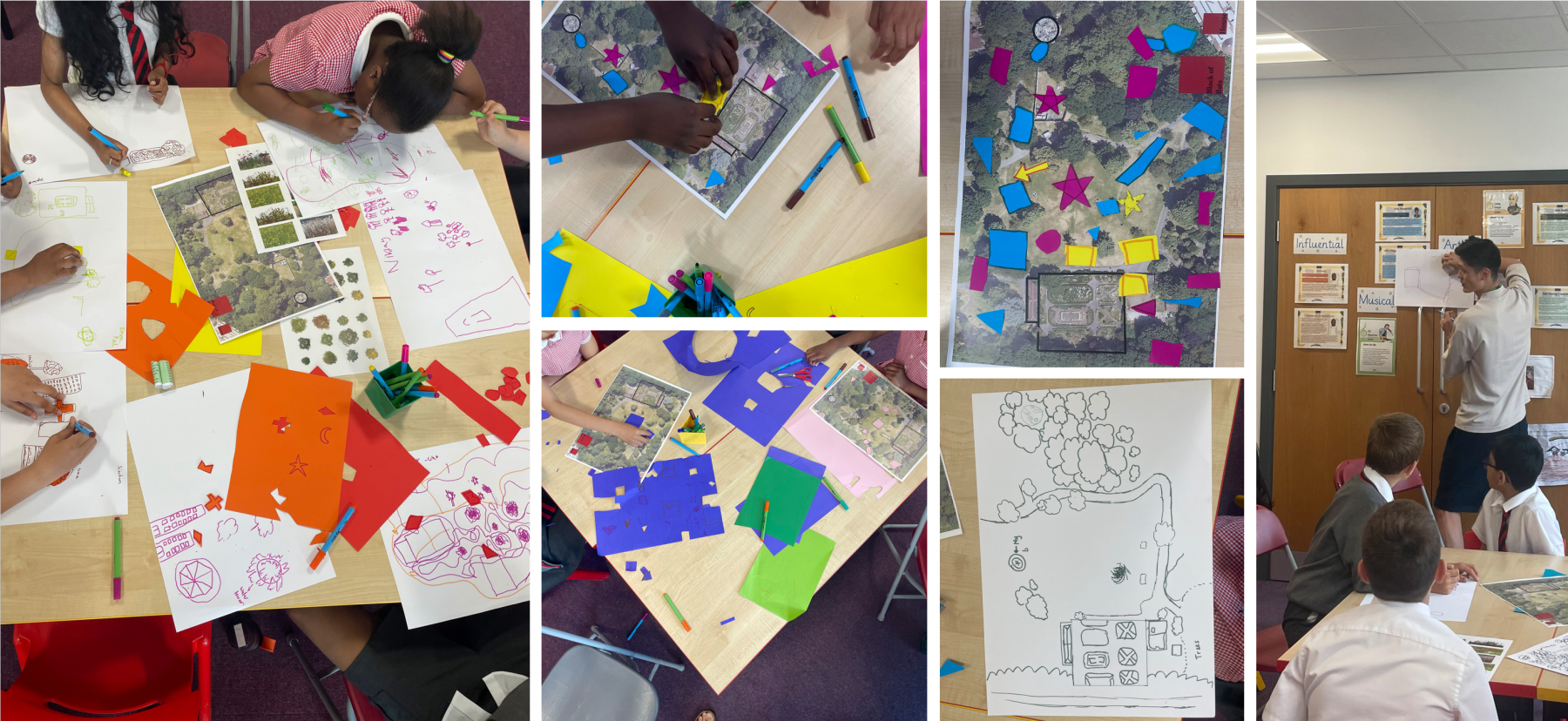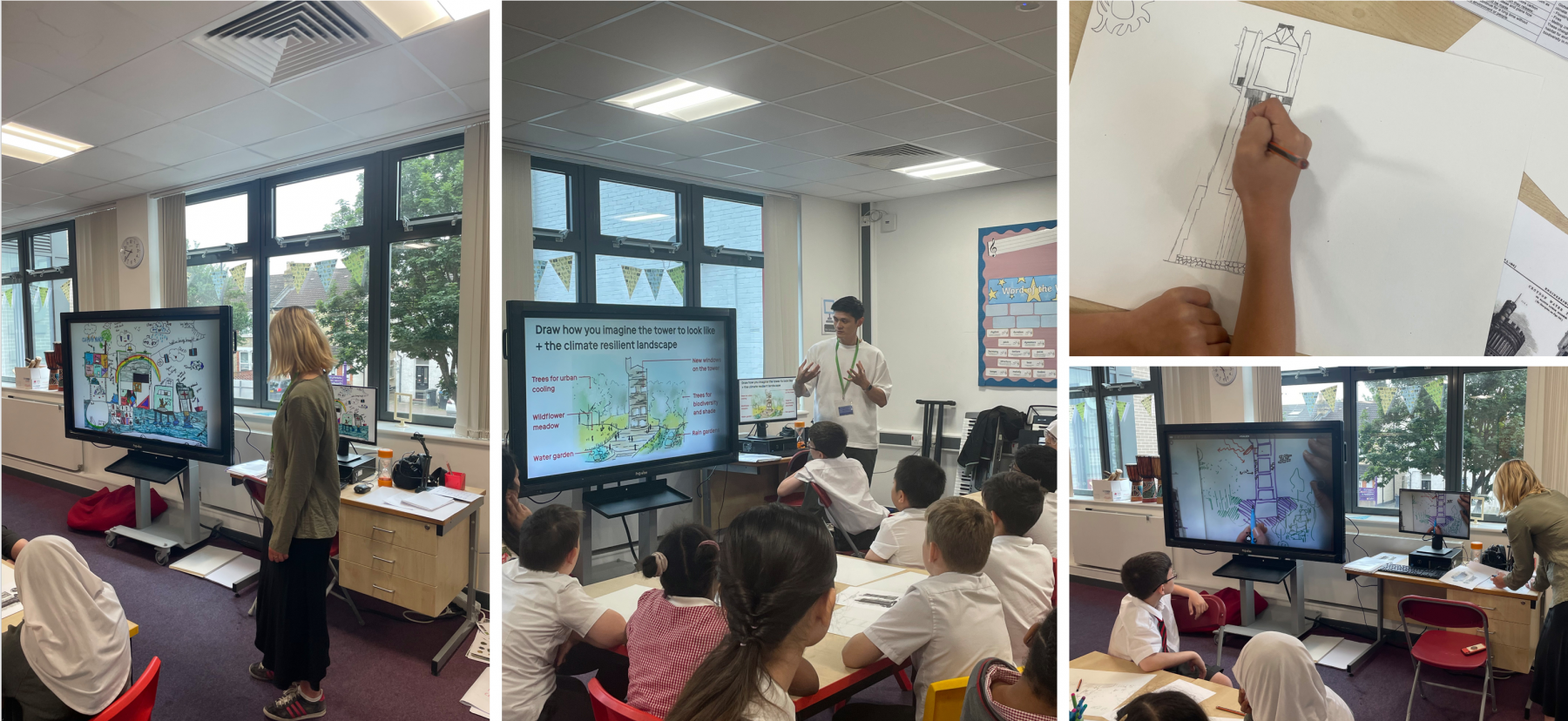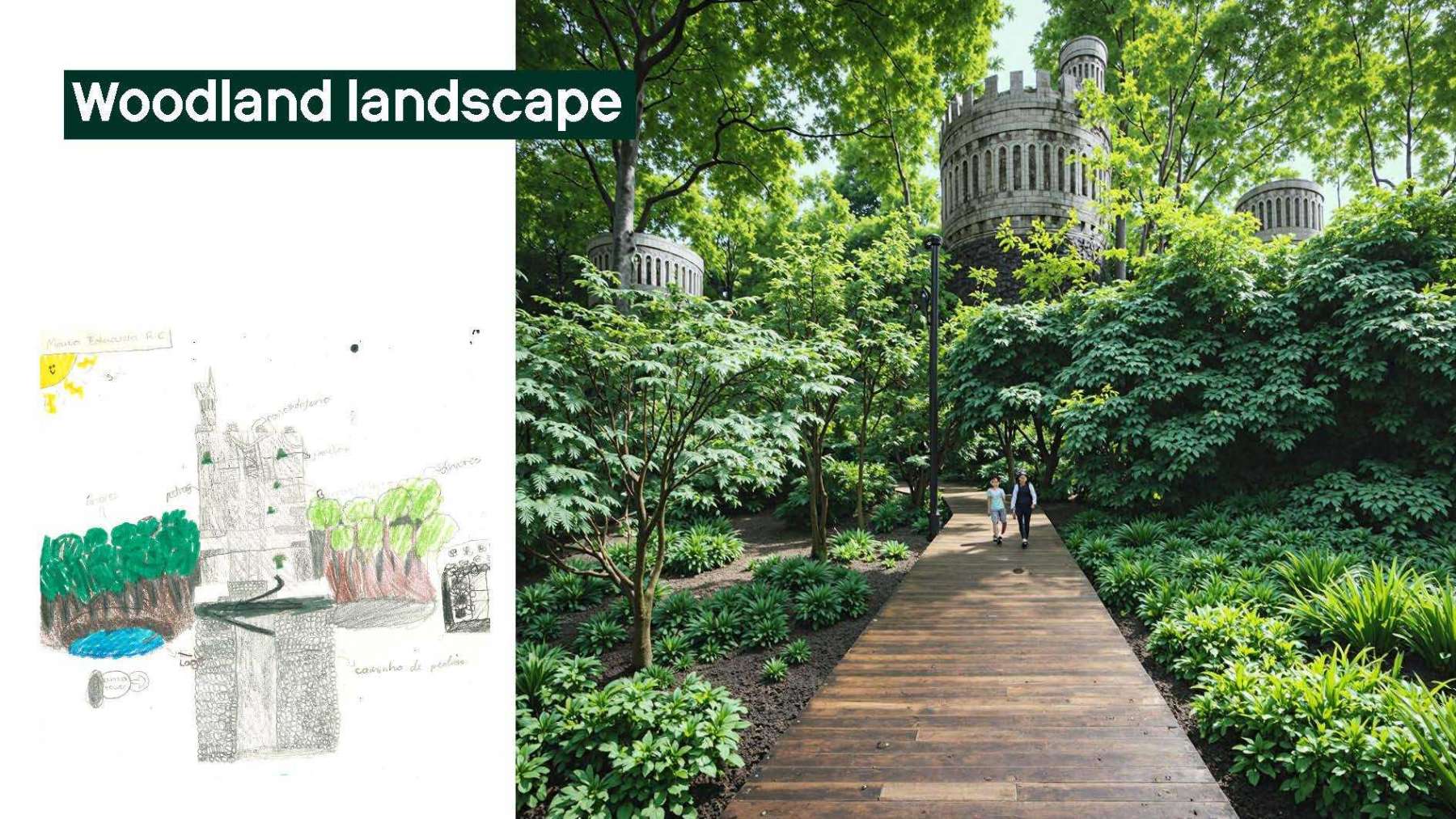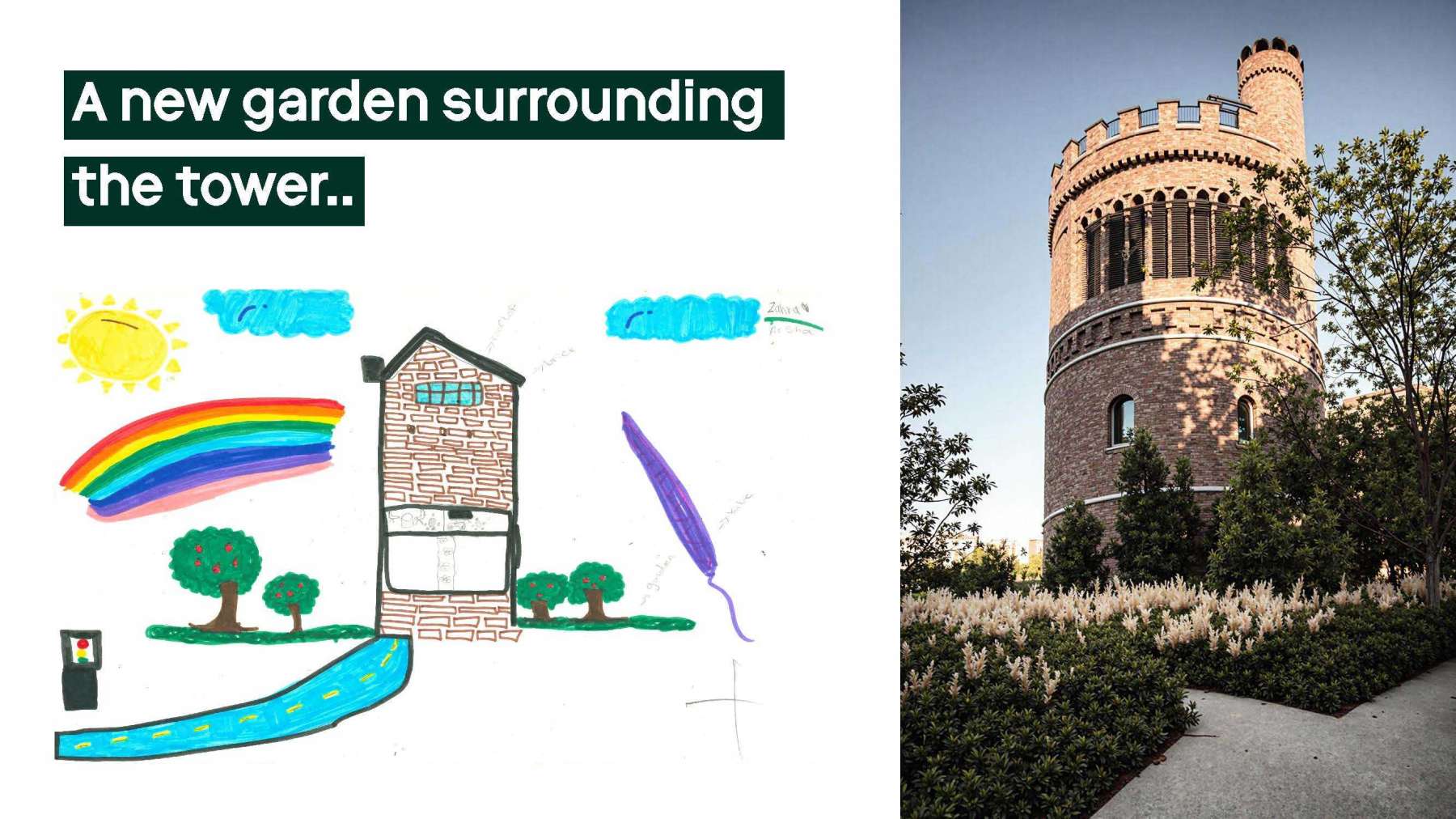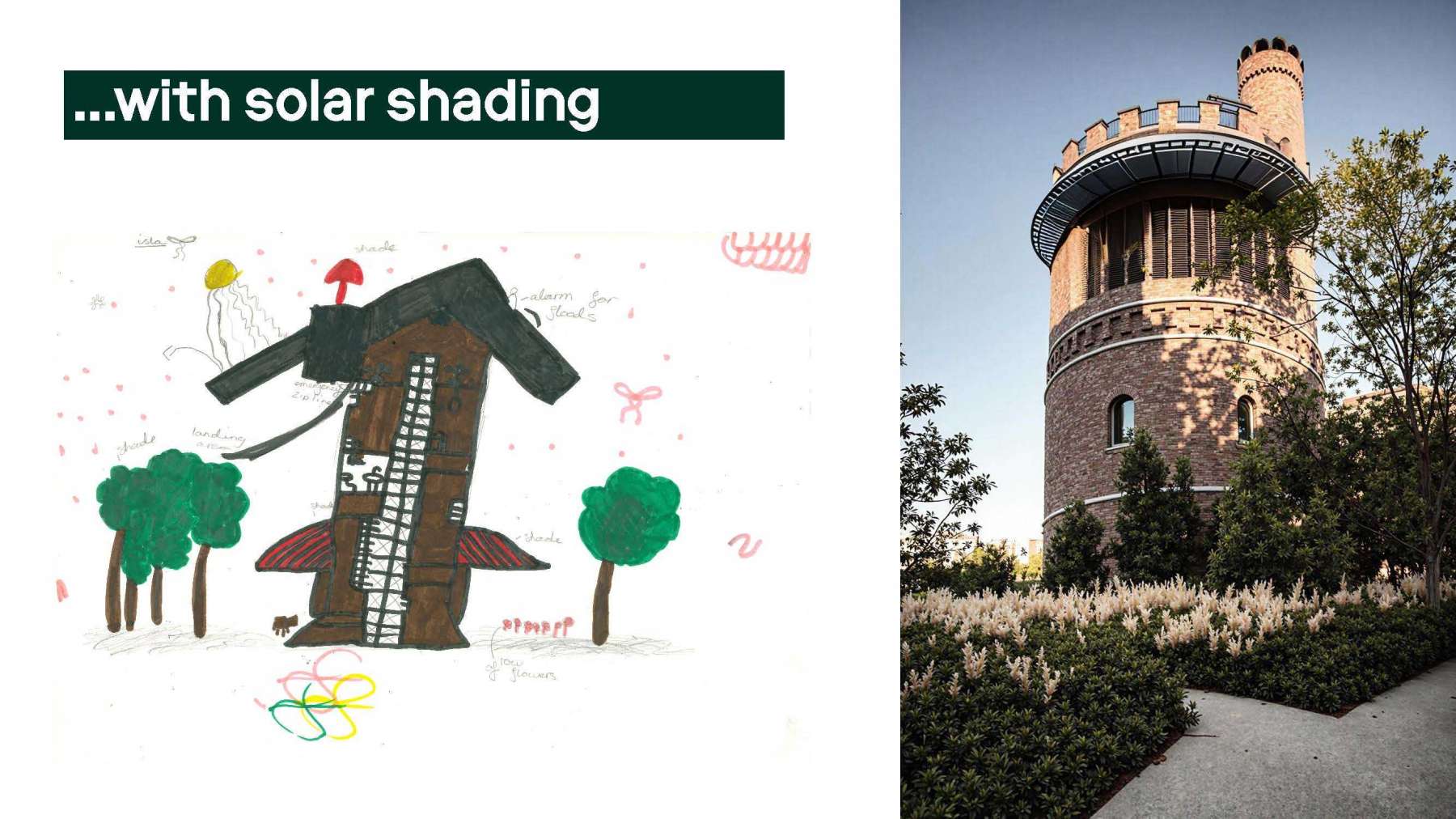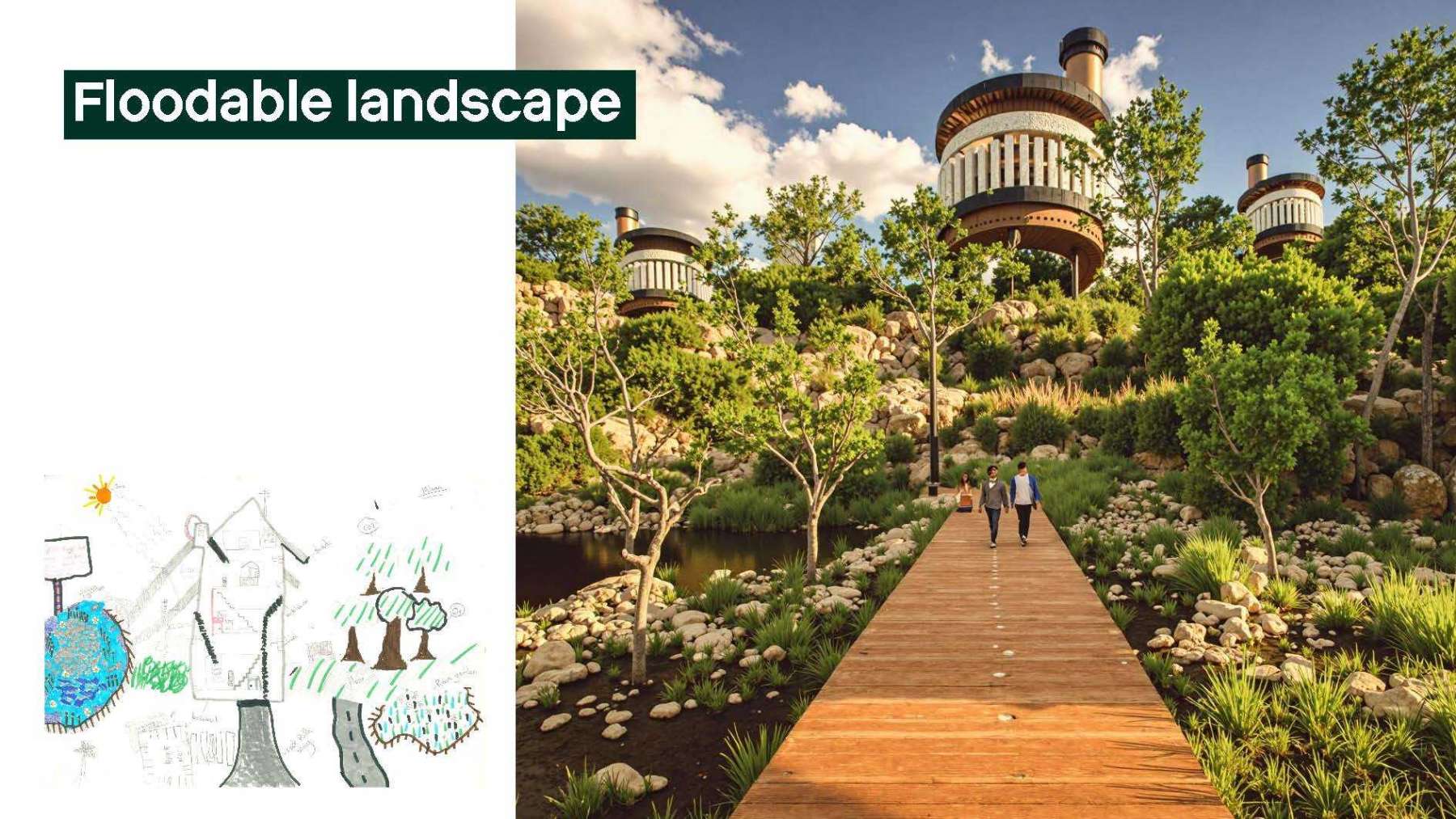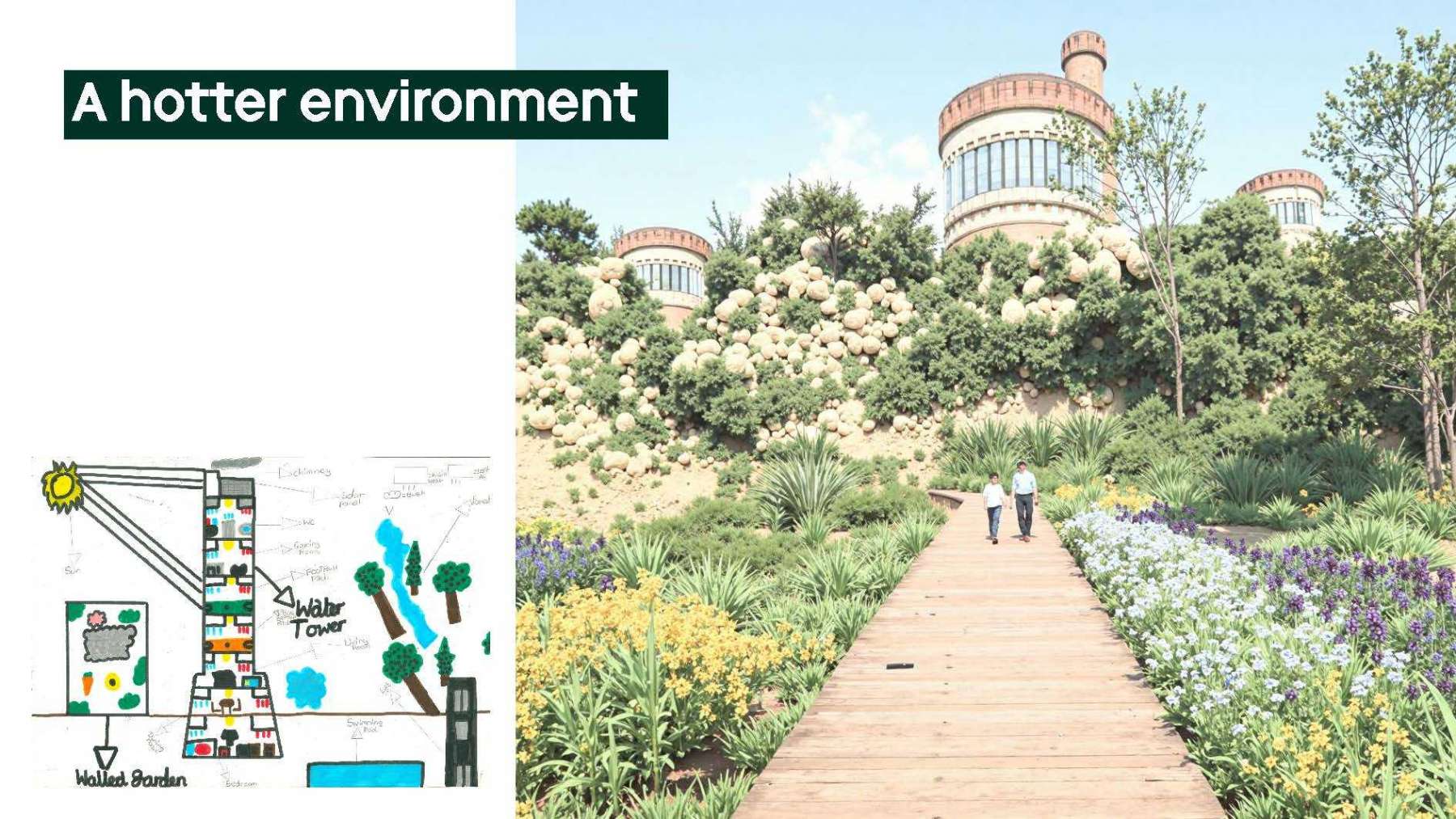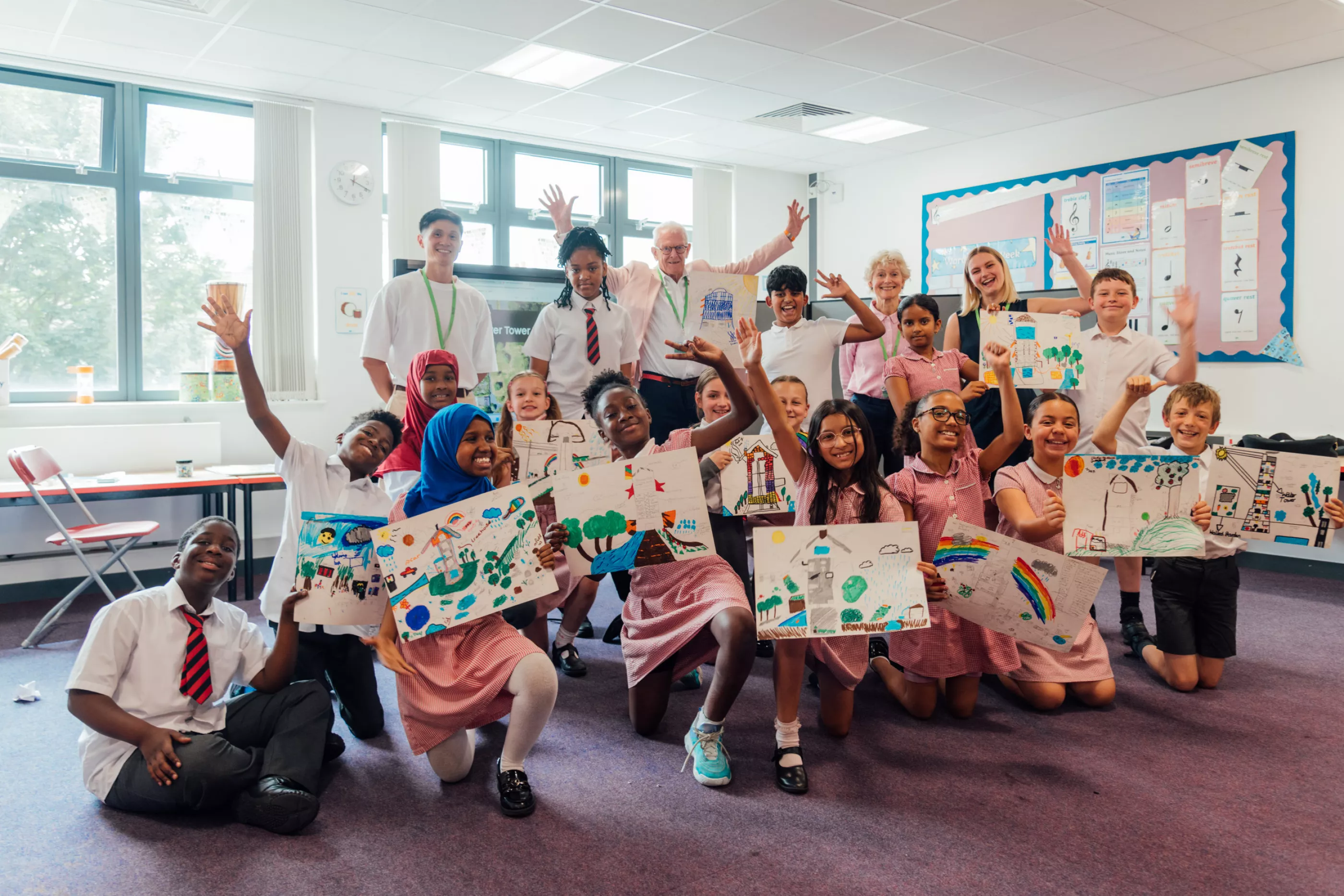A Local Park Reimagined
At Studio Egret West we are equipped with the know-how to craft buildings and spaces, integrate sustainability-led strategies, and communicate ideas effectively. While we may not have all the answers to the climate crisis, the very nature of our profession to designing and building environments provides the specific tools and experience needed to guide and inspire children in ways traditional education often cannot. Crucially, the programme aimed to provide stepping stones for children to broaden their minds, enhance problem-solving skills, and think differently about climate change.
Our self-curated programme took students on a journey covering the fundamentals of architectural and landscape design principles: site surveying, analysis, drawing techniques, masterplanning, and visualisation. Upon discovering a nearby park featuring a 150-year-old water tower and a beautifully planted walled garden, we defined our practical exercise and brief as ‘The Water Tower Masterplan’.
This site offered an ample source of inspiration to underpin our sustainability-focused learning objectives. Beyond emphasising emissions from building materials and operations, we highlighted the water tower's value regarding its heritage, local character, and inherent function to hold and distribute water. We challenged the children by asking: "What could the iconic Victorian-era water tower be repurposed as?" These questions directly fed into their design proposals for a climate-resilient version of the structure that remains vacant and fenced off today.
On the opposite side of the park, a stunning walled garden served as a source of inspiration, prompting children to appreciate the beauty of nature, the composite value of brick walls and stone paving, and biodiversity up close. This location allowed us to discuss the importance of urban cooling, soil health, growing food, ecology, and even drainage.
